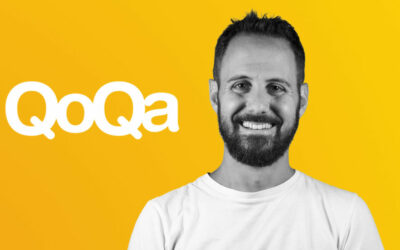Hugo Arnaud, you are the Co-Director of the Foundation. Can you tell us more about your background?
I joined Terre de Liens a year and a half ago and am now Co-General Director following the departure of the founder. I studied business and have always been passionate about entrepreneurship in service of a social cause. I also come from a family of farmers, which explains how I ended up at Terre de Liens!
What is the purpose of Terre de Liens?
To make farmland a common good. Terre de Liens is a citizen-driven movement whose mission is to preserve agricultural land while protecting both the environment and people.
How did you first encounter Holacracy?
I had already been exposed to alternative management models through my previous professional experiences. I also read about liberated companies, including Reinventing Organizations by Frederic Laloux.
Then, when we decided to move towards co-leadership at Terre de Liens, we realized we needed to clarify our decision-making scopes for each of the three co-directors. That’s when we met Aliocha and discovered Holacracy!
As a co-director, what motivated you to adopt Holacracy?
First, the three of us have taken over from Terre de Liens’ founder, and we need to embrace and carry forward the organization’s purpose. Holacracy helps us define and uphold it.
Second, it allows us to clarify our responsibilities and decision-making scopes, making our three-person leadership structure more transparent—both for the board and our team.
Lastly, for me personally—since I oversee HR within our leadership team—clearly defining roles and accountabilities is essential in the context of a rapidly growing team. In just 18 months, we’re expanding from 17 to 33 employees, hiring 10 new people in just 6 months:
“Holacracy provides the structure we need.”
How do you make time for Holacracy and its adoption?
It’s an investment, but we are convinced it’s worth dedicating time to. It provides valuable clarity in a period of organizational growth and role creation.
Additionally, adopting Holacracy was our first major decision as co-leaders!
Symbolically, it marks a new chapter for the Foundation and aligns with the societal model we aspire to. As a public-interest foundation, our employees tend to be open-minded, and this shift pushes us towards a system that resonates with our values.
Are there other organizational needs that Holacracy addresses for Terre de Liens?
Our organization is quite complex: we have very diverse roles (communication, farm management, etc.), and we are a movement made up of different entities—the Foundation, a Social Investment Enterprise, and an Association Network.
The Holarchy visualized in Holaspirit helps us make roles clear and visible across these different structures and to the stakeholders we collaborate with.
How did you onboard the team?
We decided to work with an external coach and focus, as a leadership team, on the reasons behind the change.
We followed several steps:
- The co-leadership team introduced the idea of Holacracy, explaining that external support would be needed.
- Aliocha met with the team and the board, addressing initial questions.
- We held an onboarding seminar for the entire team.
- We just completed a 4-day Holacracy practitioner training for part of the team.
What was it like to sign the Holacracy Constitution?
It was quite an emotional moment. We felt that, as a co-leadership team, we were making our mark, and the team was truly embracing the journey.
It was a mix of relief and amazement—we felt the team’s enthusiasm, which is important and motivating for the future!
What changes have you observed in the team since signing the Constitution?
We just completed governance practitioner training three weeks ago, and already, we’ve seen concrete shifts:
- More effective meetings—whether in small or large circles, we cover more topics in less time.
- A new vocabulary—we’re using Holacratic terms in our daily interactions!
Were there any difficult moments in onboarding the team?
I noticed that some people worry about how their role might evolve. It’s a shift in reference points, which can be uncomfortable for some.
However, what’s reassuring is that Holacracy provides processes to address concerns.
Another challenge is getting used to the structured meeting formats for tactical and governance sessions. The facilitator and secretary roles can be tricky, especially for those who haven’t been trained yet.
What are your next steps?
We still have work to do on describing existing roles.
Right now, our goal is to practice Holacracy daily, with support from our first trained team members. Next, another group will complete the 4-day training.
We are also reaching a point where we need to explain to our external stakeholders what we’re implementing and how it benefits us.
What advice would you give to an organization considering Holacracy?
I would recommend talking to Sémawé and other organizations that have adopted Holacracy.
For example, we spoke with Arcadie, a company with 120 employees that has been using Holacracy since 2017. Hearing real-world experiences is reassuring—it helps because adoption takes time and is a real investment.
I strongly believe in experimenting if you feel drawn to it, knowing that you can always step back if needed. However, I think it’s essential to commit to testing Holacracy as a whole system.
From what I’ve heard, staying halfway between traditional and Holacratic structures doesn’t work well. Falling into the trap of hyper-horizontal decision-making, where everyone must be consulted for every decision, is inefficient.
In my view, Holacracy’s structured framework is necessary.
Anything else you’d like to add?
Yes! I just want to say that working with Sémawé has been a pleasure.
Holacracy is complex, and the process could be tedious, but we are making great progress while keeping things enjoyable!

Juliette Brunerie
Discover other articles written by the author!
Other articles .
Interview with Fabio Monte, leader of QoQa: Holacracy with a team of 180 people, an ambitious challenge
Interview with Fabio Monte, Leader at QoQa QoQa is one of the biggest players in the Swiss e-commerce market. The idea for this platform was launched in 2005 by its founder, Pascal Meyer. The concept is simple: handpicked products available for just 24 hours at...
How QoQa Managed to Successfully Implement Holacracy Using Holaspirit
Read the articleDiscover other articles written by the author!Other articles .
How is the Grenoble Metropolis inspired by Holacracy?
Discover How Holacracy Is Influencing and Inspiring Managers in the Grenoble Metropolis. Hélène Clot, Director of Strategy, Innovation, and Citizen Relations, shares her journey and how Holacracy is addressing key challenges in the public sector today. She explains...




